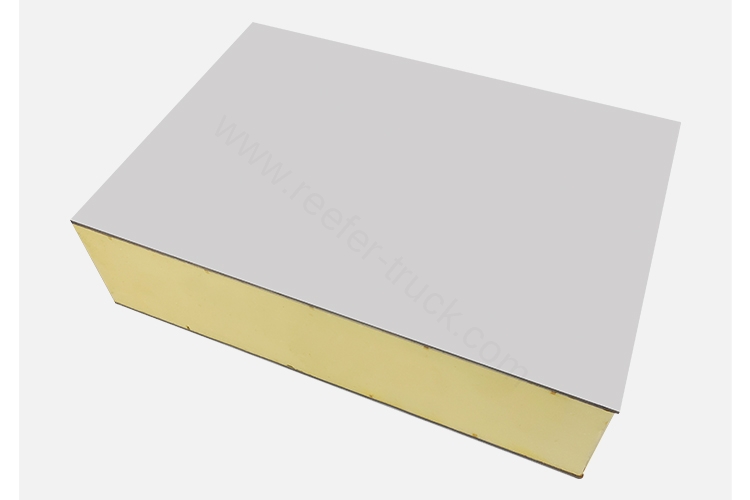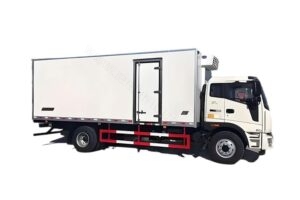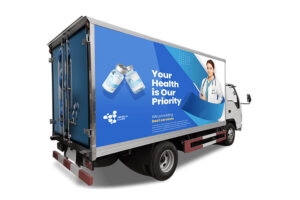Refrigerated trucks with FRP foam panels are better insulated, more durable than aluminum and stainless steel, and cost-effective.
FRP sheet is the surface layer of FRP foam panels, and FRP is “Fiberglass Reinforced Plastic”. It is commonly used to reinforce unsaturated polyester, epoxy, and phenolic resins.
Advantages of using FRP for refrigerated trucks
There are 5 main advantages of using FRP in refrigerated trucks, which are the reasons for replacing other metal materials.
Insulation: The structure of insulated refrigerated trucks is usually made with FRP sheet and PU/XPS foam, they have very low thermal conductivity and have better insulation performance than using foam like PET, PP, and PE.
Non-absorbent: FRP can resist water erosion and can completely block air from entering the interior, which can better protect the core material, as well as the goods inside.
Easy to install: Designed to be assembled using high-strength aluminum profiles and FRP foam panels, it can be CKD delivered to customers, which can make the installation simpler, requiring only one person to use one day to complete.
Easy to clean: FRP is not easily dirty, smooth surface, and has good chemical stability, anti-aging, and acid resistance. It is very easy to clean.
Low cost: the use of FRP is cheaper, not only does has a higher performance, but also cheaper. And the late maintenance cost is also very low.
Size of FRP foam Panels for refrigerated trucks
| Width | Max 3.2m. |
| Thickness | 10-150mm. |
| Length | Max 12m. |
| Parts | Front panels |
| Rear doors | |
| Side panels | |
| Roof panels | |
| Floor panels. | |
| Partition panels. |
Which refrigerated trucks use FRP foam Panels?
The above-mentioned advantages of FRP foam panels are very wide in practical use. It can be used for small trailers, light-weight refrigerated trucks, heavy trucks, semi-trailers, and so on.




